If you have been dealing with symptoms of TMJ disorder, you can’t afford not to read this article. In my training, I was taught that TMJ disorder is caused by bad posture, but I have been skeptical until now. In a recent experience working with my mom, she was able to eliminate her jaw pain through the use of postural corrective exercise. I am now a believer.
If you have been dealing with symptoms of TMJ disorder, you can’t afford not to read this article. In my training, I was taught that TMJ disorder is caused by bad posture, but I have been skeptical until now. In a recent experience working with my mom, she was able to eliminate her jaw pain through the use of postural corrective exercise. I am now a believer.
With this article, I hope to save you a lot of pain, time, and money by explaining how your posture could be the culprit for your jaw pain and how to fix it through a self-diagnosed alignment-based exercise approach. I will even provide you with some simple exercises you can begin doing today to get some relief from your symptoms.
What Is TMJ Disorder?
TMJ stands for temporomandibular joint, which is the jaw joint that connects the mandible, or the bone of the lower jaw, to the temporal bones of the skull on either side of the head. Symptoms of TMJ disorder (often referred to as just TMJ) include:
- Pain in the jaw and surrounding muscles
- Grinding and clicking of the jaw
- Jaw muscle stiffness
- Locking of the jaw
This disorder can range from a slight nuisance to severely debilitating as it can impact your ability to eat, breathe, talk, and sleep. According to the TMJ Association, approximately 12% of the population, or 35 million people, in the United States are affected by TMJ disorder at any given time.
There are many possible causes of TMJ disorder:
- Autoimmune diseases
- Infections
- Injuries to the jaw area
- Dental procedures
- Various forms of arthritis
- Female sex hormones
- Gum chewing
- Stress
Forms of treatment include:
- Pain medications
- Stabilization splint or bite guard
- Orthodontic treatments to change bite
- Crown or bridge work
- Grinding down teeth
- Injections
- Surgery
None of those sound fun, and all of them sound expensive! So, let’s explore the posture theory and postural corrective exercise treatment route, and see how it sizes up to these other treatment options.
The Anatomy of TMJ Disorder
From an alignment perspective, the human head is intended to sit directly on top of the shoulders. If properly aligned, from the side view, you should ideally see the ear lobe directly on top of the shoulder joint. When the head moves forward, in front of the shoulder joint, such as during computer use and other sedentary activities, the muscles of the temporomandibular joint, along with the neck and shoulder muscles, all have to work in overdrive to simply hold the head up and fight gravity.
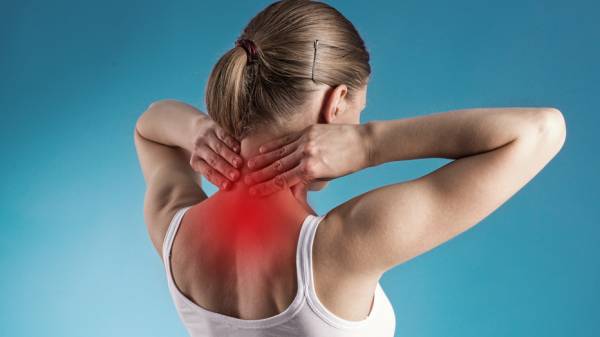
To get a sense of what is happening, take something like an eight-pound dumbbell and hold it directly overhead with your elbow locked out straight. (The average adult human head weighs eight pounds, thus the reference to an eight-pound dumbbell.) Hold the weight directly over your center of gravity. Then, begin to move the weight forward, inch by inch, until it is about two feet out in front of you. You will notice a significant increase in strain in your shoulder and neck compared to when the weight was stacked directly over your head. In proper alignment there was little effort involved in stabilizing the weight in its position, but when you are out of alignment more effort is required.
From an alignment perspective, the human head is intended to sit directly on top of the shoulders.
Just like the eight-pound dumbbell, when your head moves forward out of it’s intended vertical alignment with the shoulder the surrounding muscles must work harder to keep your head up. The fine and complex musculature responsible for the movement and articulation of the temporomandibular joint were not intended to perform heavy lifting. When these muscles are asked to take on the role of supporting the head, they go into lock down, and the jaw loses its ability to move smoothly and freely. The result is pain, locking, and stiffness of the jaw.
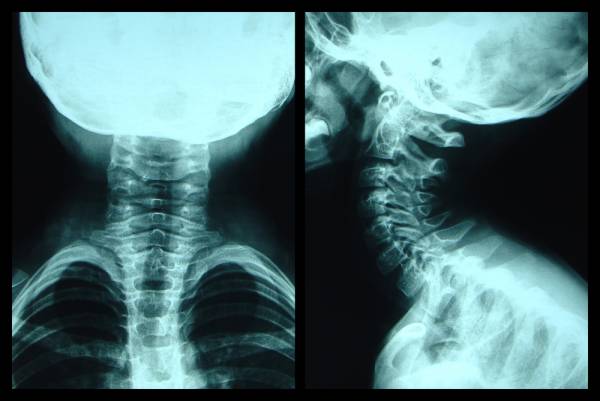
The Case Study
Meet my mom. We started working together in January of this year on her shoulder, back, and knee pain. Her jaw pain was the least of her concerns at the time, but she mentioned it casually in one of our appointments.
She had been to the doctor and dentist multiple times for her jaw and was about to see a specialist to have a custom mouth guard made, which was going to cost a lot of money. I told my mom to hold off on that mouth guard and to see what we could do with the use of corrective exercise.
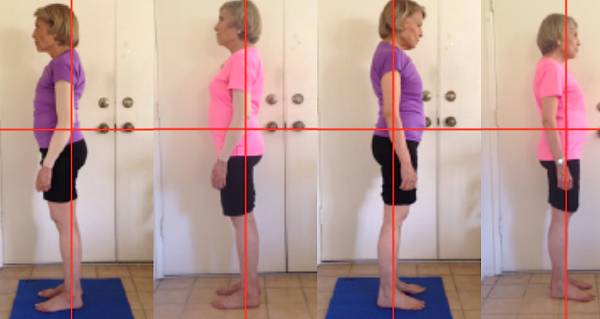
Purple shirt: before photos; Pink shirt: after photos
The exercises I selected for my mom placed an emphasis on restoring hip function, as well as repositioning the head, thoracic spine, and shoulders. As you can see in my mom’s before photos, which were taken in January, she started out with significant forward head posture. But my mom is a good little student, and she practiced (and continues to practice) her routine of postural stretches and exercises daily. They take her about 45 minutes, and she never misses a day.
After three months of this exercise routine, we eliminated her shoulder, back, and knee pain – and much to my mom’s and my delight, her jaw pain was also gone. As you can see in her after photos, the position of her head, shoulders, and thoracic spine have significantly improved. Of course, now my mom has to maintain her results by continuing to practice her exercises, but if you were to ask her, she would tell you it sure beats a $2,000 dental bill!
A Self Test and 3 Exercises to Ease Your Pain
How can you tell if the position of your head is playing a role in your jaw symptoms?
Try this: stand up against a wall with your heels and hips touching the wall. Does your head naturally and easily touch the wall, too? Or do you have to work to get your head back? If the latter is true, it may be the case that your posture needs some work and that your jaw might start feeling better once your head gets back in line.
Get started on improving your posture and eliminating jaw pain with these three simple postural exercises:
1. Sitting Knee Pillow Squeezes With Hands Behind Back
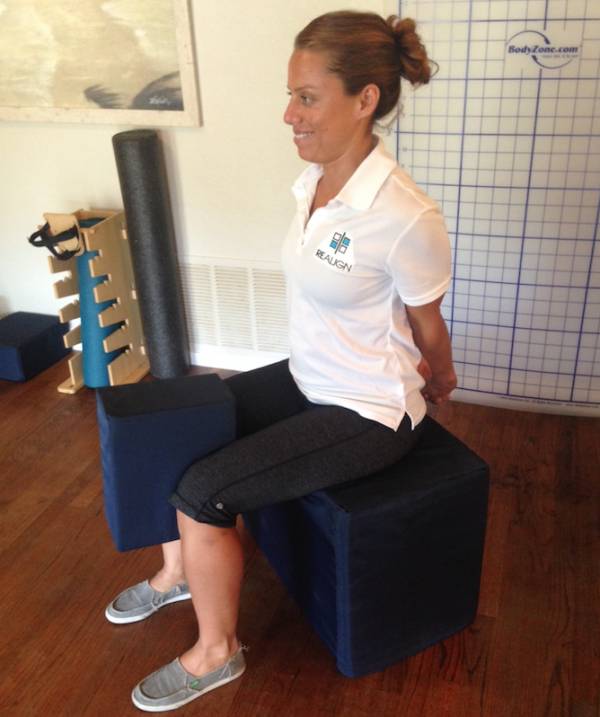
- Sit on a chair so your knees and hips are at ninety degrees.
- Place a block or pillow between your knees and clasp your hands behind your back.
- Pinch your shoulder blades together and squeeze and release the block or pillow between your knees 60 times.
- Be sure to breathe and keep your stomach relaxed.
This exercise will pull your shoulders and head back where they belong, while activating key posture muscles in your hips.
2. Static Ankle Squeezes
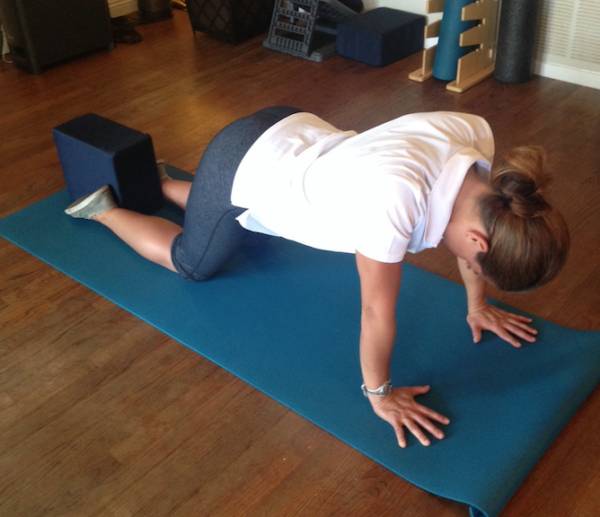
- Place a block between your feet and get on all fours on the floor.
- Start with your shoulders directly over your wrists and your hips directly over your ankles.
- Walk your hands out in front a hand length and shift your body forward so your shoulders stack right over your wrists. Your hips should now be about six inches in front of your hips.
- Allow your shoulder blades to collapse together, your head to fall, and your belly to relax.
- Squeeze and release the entire inner edge of your feet against the block 60 times.
- Keep your stomach relaxed, and be sure to not let yourself go too far forward, this may cause some pain in the low back.
This exercise will promote extension in the pelvis and spine, as well as release muscles of the neck and upper back. Repositioning the hips and spine will allow the head to sit in a better place once you stand up.
3. Wall Towels
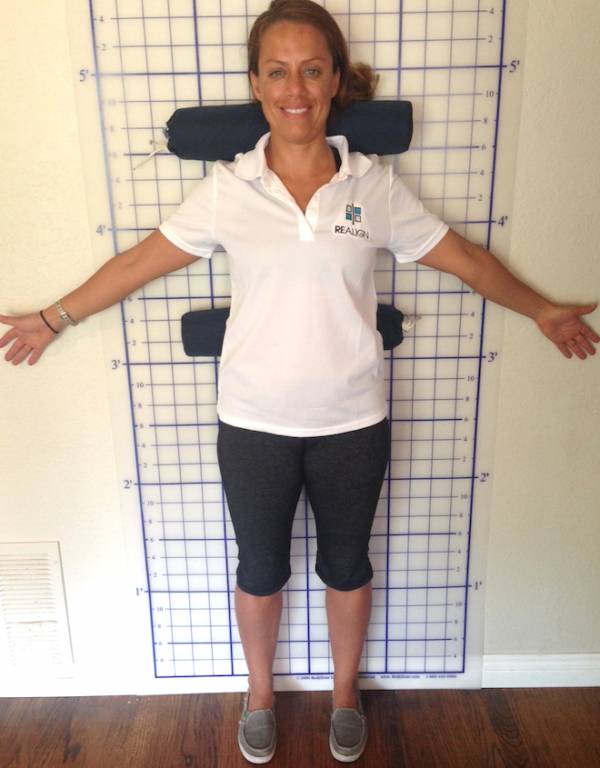
- Stand against a wall with your feet straight and hip-width apart.
- Place a towel roll behind your neck and place a towel roll behind your low back. Be sure your head, upper back, and hips are touching the wall.
- For an added challenge, try placing the backs of your hands against the wall. You may need to step your feet away from the wall three inches to maintain this position. Hold this position for 3 minutes.
This exercise will reeducate the proper curvature of your spine, and remind your head of its correct vertical alignment.
A Pain-Free Future
Posture could be the culprit behind your jaw pain, but don’t take my word for it. Try the exercises and tests from this article and see for yourself. It might save you a whole lot of time and money – and get you on the path towards a pain free jaw.
Read more on posture:
- Does Good Posture Matter or Is It All a Load of Crap?
- How to Unlock Your Athletic Potential Through Good Posture
- How Gait and Posture Change With Age and Exercise
- What’s New On Breaking Muscle Today
References:
1. “TMD Basics,” The TMJ Association, Ltd., accessed April 17, 2015.
Photo 1 & 2 courtesy of Shutterstock.
Photos 3-6 courtesy of Maryann Berry.






